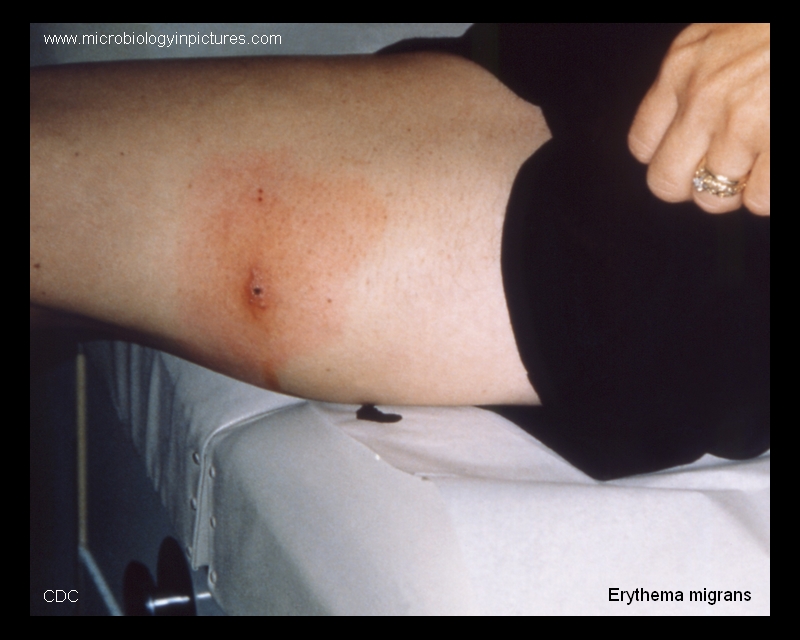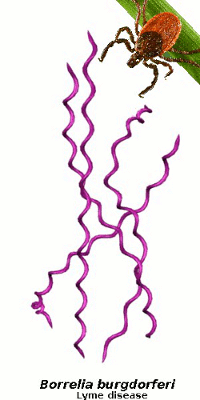

Erythema migrans ("bull's-eye" rash)
This image depicts the lateral aspect of the left thigh of a patient who'd presented with what was diagnosed as Lyme disease.Note the characteristic red, expanding rash called erythema migrans (EM), that had been caused by the bacterium,
Borrelia burgdorferi.
Erythema migrans occurs in approximately 70-80% of infected persons and begins at the site of a tick bite after
a delay of 3-30 days (average is about 7 days).
Rash gradually expands over a period of several days, and can reach up to 12 inches (30 cm) across. Parts of the rash may clear
as it enlarges, resulting in a "bull's-eye" appearance.
Rash usually feels warm to the touch but is rarely itchy or painful.
B. burgdorferi bacteria are transmitted to humans through the bite of infected ticks. Typical symptoms include fever, headache,
fatigue, and a characteristic skin rash called erythema migrans. If left untreated, infection can spread to joints, the heart,
and the nervous system. Lyme disease is diagnosed based on symptoms, physical findings, e.g., rash, and the possibility of
exposure to infected ticks and laboratory testing.
Most cases of Lyme disease can be treated successfully with a few weeks of antibiotics.
Steps to prevent Lyme disease include using insect repellent, removing ticks promptly, applying pesticides, and reducing tick habitat.
The ticks that transmit Lyme disease can occasionally transmit other tickborne diseases as well.
